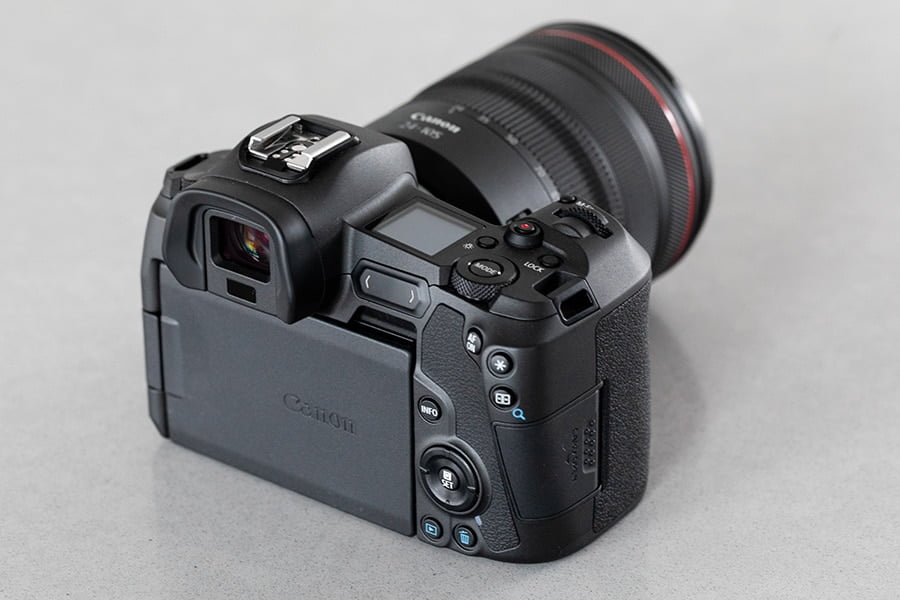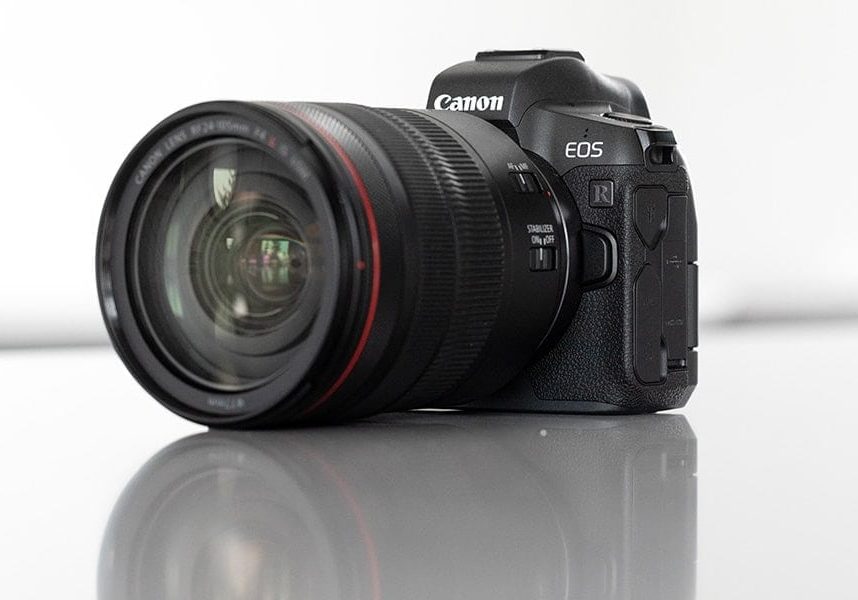
Canon EOS R Mirrorless Camera Review
Check out this real-world Canon EOS R review by a professional photography who puts it through its paces. Should you buy this camera in 2024?!
When Sony announced the first iteration of the a7 in 2013, not many photographers thought much of it. Now, it seems as if nearly all of my colleagues are jumping ship from Canon & Nikon to Sony.
So where does that leave me, having been a Canon user for nearly 10 years now? I enjoy the 5D Mark IV. I love its size, dual-pixel autofocus and for the most part, it does a good job of keeping up with my editorial approach to weddings.
However, with Sony forcing Canon’s hand, its inevitable that we’ll all one day be shooting mirrorless. The electronic viewfinder has its advantages over the optical, but Canon’s go at their first full-frame mirrorless, the EOS R, falls short in many areas.
In short, when shooting with the Canon EOS R, your ability to hit focus and nail exposure increases dramatically over any dSLR I’ve ever shot with.
However, due to its finicky controls, odd ergonomics and laggy interface, you’ll miss moments, because the camera just can’t keep up.
It’s the Toyota Prius of electric cars. It does some things well, but Sony’s current a7 models are more like a Tesla in comparison – check the Canon EOS
Canon EOS R Review Summary
The Canon EOS R has its fair share of both pros and cons. The EVF is great, the autofocus is excellent, and the customisation options are powerful and plentiful. On the downside, the ergonomics leave a bit to be desired, and the single card slot may be a deal-breaker for some.
Canon EOS R | The Pros
- Incredible AF performance
- Excellent EVF
- Good image quality
- Solid build
- Single card slot
- Cumbersome LCD
- Subpar ergonomics
Autofocus
Ever since the 5D Mark IV arrived with its dual-pixel autofocus, I’ve found myself shooting from the rear LCD more often than not. I hate feeling like a tourist at the Grand Canyon, but it’s a sacrifice I’m willing to make in exchange for knowing my pictures will be in focus.
The Canon EOS R gives you that same increased hit rate without looking like Aunt Sally trying to use a dSLR for the first time.
If I had to take an educated guess, my hit rate using an SLR over the past 4 to 6 years would be anywhere from 40 to 60 percent. This includes everything from dimly lit prep photos all the way to bodies moving on the dance floor.
The hit rate of any camera in good light during a portrait session will be much higher.
In my past two months with the Canon EOS R, my hit rate is near 90 percent. While the powerhouse pro bodies are still slightly quicker for initial focus lock in servo, the EOS R has a better chance of delivering more pictures in focus from the set. This is a great improvement in Focus Point Coverage
Gone are the days of being locked into a few dozen AF points clustered in the middle of your frame. The AF selection coverage, 88% horizontal and 100% vertical, is mind-blowing compared to an SLR.
You’ll spend less time cropping in post, which is a huge bonus.
EVF & Exposure
Gone are the days of completely blowing an exposure. As is the case with any mirrorless, what you see in the EVF is what you get.
The EVF in the Canon EOS R is great. The technical specs are one thing, but moving from an optical viewfinder to the EVF in the EOS R isn’t an issue.
The refresh rate is fast and the resolution is crisp. I did notice some odd lag when using IS lenses at slower shutter speeds. At 1/50th or faster, it is a non-issue.
Canon EOS R | The Cons
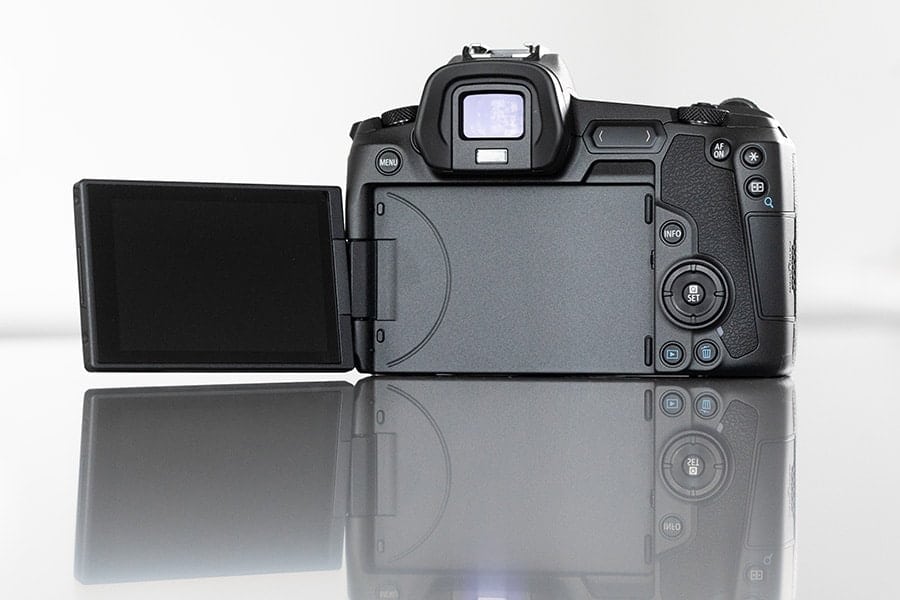
Flip screen on the Canon EOS R
Flip-Out Screen
Ever since Nikon put the tilt screen on the D750, I’ve been eagerly waiting for Canon to follow suit. I cringed when I heard Canon might go with the flip-out approach, and unfortunately my fears where confirmed.
The flip out LCD is cumbersome. In order to achieve tilt functionality, the LCD must be folded out to the side and then rotated 180 degrees.
Even more annoying is how the LCD is now hanging out to the left of the camera.
[Editor’s Comment: it should be mentioned that the Canon EOS R is the first full frame camera to offer a front-facing screen, so this will no doubt please vloggers in particular.)
Single Memory Card Slot
When Nikon released the specs of their Z6 and Z7, people lost their minds over the single memory card slot. Canon took slightly less flak when announcing the same news, but the fact remains that a single memory card slot is unacceptable.
[Related: Nikon Z7 Review]
The only UHS II cards I have are a few Lexar Professional 128GB 2000x. Using the camera during a shoot, it gave me a recording error, requiring a reboot. I lost the last 30 photos I had just shot. Tony Northrup had a similar experience with the same model memory cards.
Many have advocated using two cameras or swapping memory cards during a shoot to minimize card failure, but it’s frustrating that Canon took two steps back during their first step forward.
I’ve been shooting dual memory cards ever since upgrading from the 5D Mark II. For me, dual card slots is the equivalent of having a second body, just in case my first body fails.
Ergonomics
The ergonomics and button layout on the Canon EOS R are a step backwards as well. I miss the thumb scroll wheel, my top ISO button and the Play and Menu buttons on the left side of the LCD.
Some might say the touch screen suffices, but muscle memory and touch screens don’t work out all that well.
There are many other odd choices made by Canon regarding functionality.
The camera’s forward and backward touch pad was a weak attempt at trying to replace the scroll wheel. It just doesn’t work as quickly or as reliably.
Using back-button focus, your thumb will activate the forward button far too often. It either needs to be further away from the AF ON button, or require an actual button press.
Canon EOS R | What Needs Work
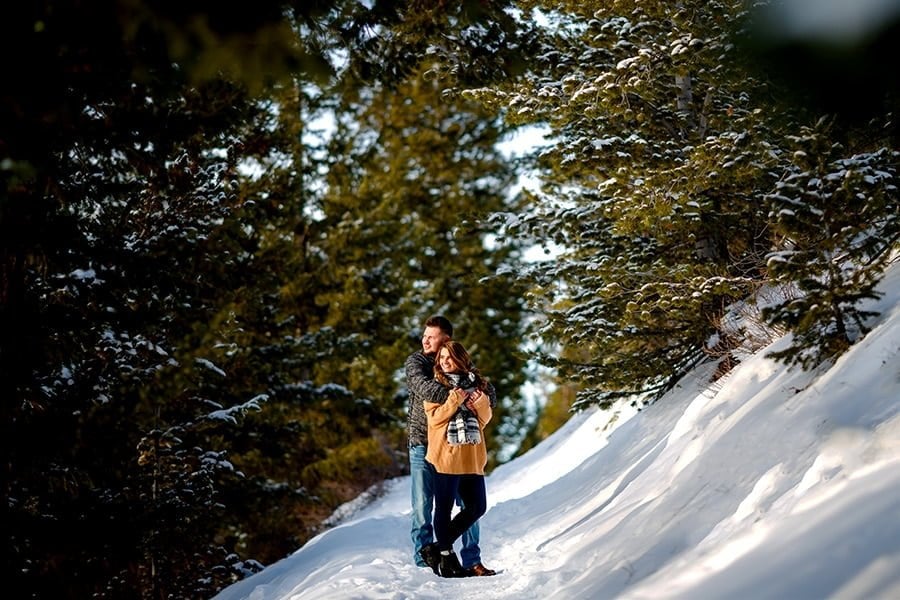
Canon EOS R + Canon 135mm f/2 | 1/400 at f/2 ISO 100
Touch screen AF point selection
When using the EVF, you can very quickly move your AF point from one side of the screen to the other using your thumb and dragging it across the rear LCD. While it takes some getting used to, it’s much faster than using a rocker or directional pad to navigate the AF points.
At first, the imprecision of this method bothered me, but I thoroughly enjoy the speed of moving my box. This still needs tweaking, but is a feature I’d love to see on every camera moving forward.
The Lenses
While this review is focused around the Canon EOS R itself, the EOS RF lens lineup is one of its biggest advantages. Canon has been killing it lately with sharp, contrast-y lenses that resolve pictures beautifully. The newly released EOS RF 28-70mm f/2 might be the perfect lens for our kit one day.
Canon isn’t rushing lenses to the market just to cover certain focal ranges. They’re releasing quality glass a lot faster than I ever expected. I still need to see the primes (24, 35, 85 and 135mm) made in native RF mounts before I’ll ever fully commit to the EOS R lineup.
Focus Ring
The focus ring makes up for some of the odd button placements on the camera. You can set it to just about anything you’d like, but I went back and forth between having it adjust ISO and aperture. My hand is always there, and it quickly became second nature.
I would like to see the size and placement standardized across all lenses moving forward.
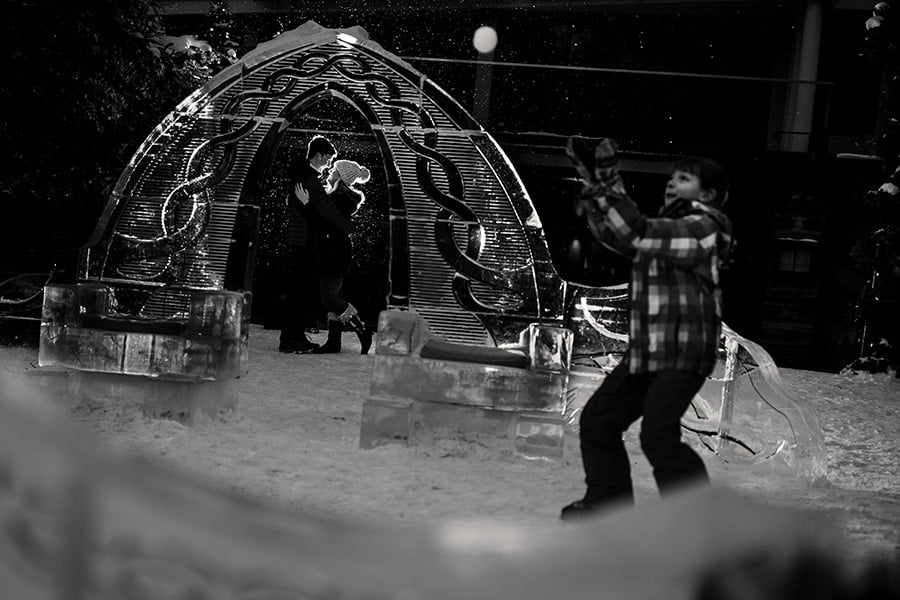
Canon EOS R + Canon 35mm f/1.4 II | 1/1250 at f/1.4 ISO 100
Servo Performance & Burst Speed
I’ve never been a high burst kind of guy. I don’t shoot hundreds of pictures of herons catching fish, so the slower burst speed in servo mode doesn’t bother me. That said, I’m not a fan of the changing rates between single shot versus servo.
I’d like to see the camera perform the same way in both modes.
Button Customization
More than any other Canon SLR that I’ve used, the customizability of the EOS R is great. I don’t shoot video, so I can change the record button to switch from one shot to servo. I can set the illumination button to zoom in on an image while reviewing it in the EVF.
I love being able customize the buttons. I wish they would stop labeling buttons altogether.
Image Quality
Canon made progress with its sensors in the 5D Mark IV and 1DX MKII. The dynamic range and ISO performance were finally on par with other similarly priced cameras. The Canon EOS R is virtually identical in how it processes images to the 5D Mark IV, which I’m fine with.
However, being slightly newer, it would have been nice if they had pushed it even further. It’s not really a complaint, but more like wishful thinking.
Everyone has their opinions on which sensor looks the best, but we can all be thankful the photos look nothing like the 5D Mark III.
Canon EOS R Review | Conclusion
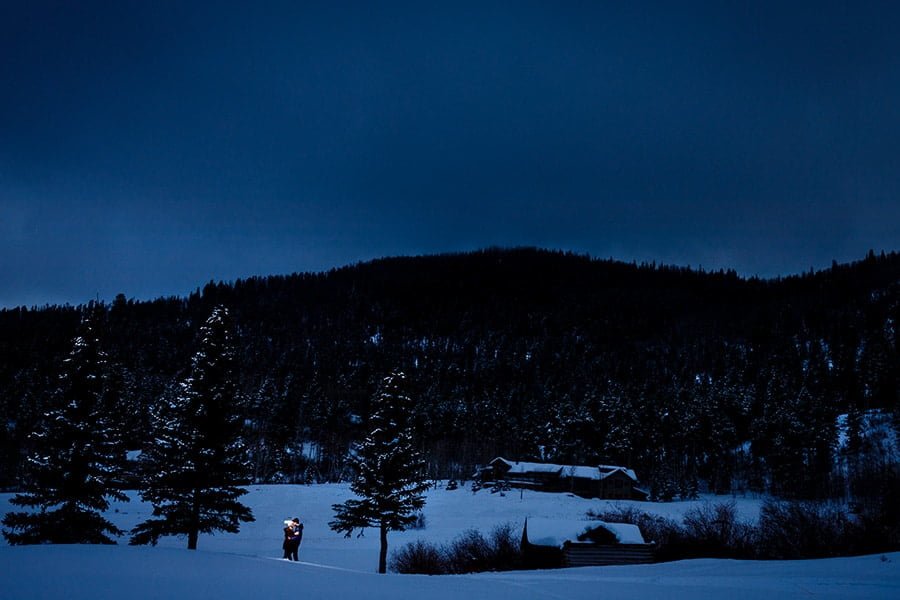
Canon EOS R + Canon 35mm f/1.4 II | 1/200 at f/18 ISO 100
The Canon EOS R is the first step in the right direction, but it’s so far behind Sony that I wouldn’t recommend it to another professional photographer.
Nikon and Canon’s top of the line dSLRs are still plenty capable for the time being. If you’ve been bitten by the mirrorless bug and can’t shake it, my choice would be the Sony A7 III or Sony A9. Sony went all-in a few years ago and its paying off for them – check this Canon EOS R vs Sony a7 iii comparison for more on that.
With its single card slot and unpredictable lag, I wouldn’t shoot with the EOS R when a client is depending on you to make the picture.
I’m confident in saying that the EOS R will give you more properly exposed and in-focus pictures than say the 5D Mark IV, but it also poses the risk of completely missing the picture all together.
Canon didn’t knock it out of the ballpark with the EOS R, but maybe that was their intention all along. Their EOS bodies and EF lenses are still in production, so the can completely kill that lineup until they know full well that the EOS R system is ready to full adopt by professional photographers.
They’ve also priced this camera accordingly. You’ll get the same image quality and a better focusing system than the 5D Mark IV, but we just wish it worked as well as it should.
My hope is that 2024 brings a more well-rounded Canon EOS R body that I can eventually migrate to. If not this year, I may be jumping ship to Sony along with everyone else come 2020.





